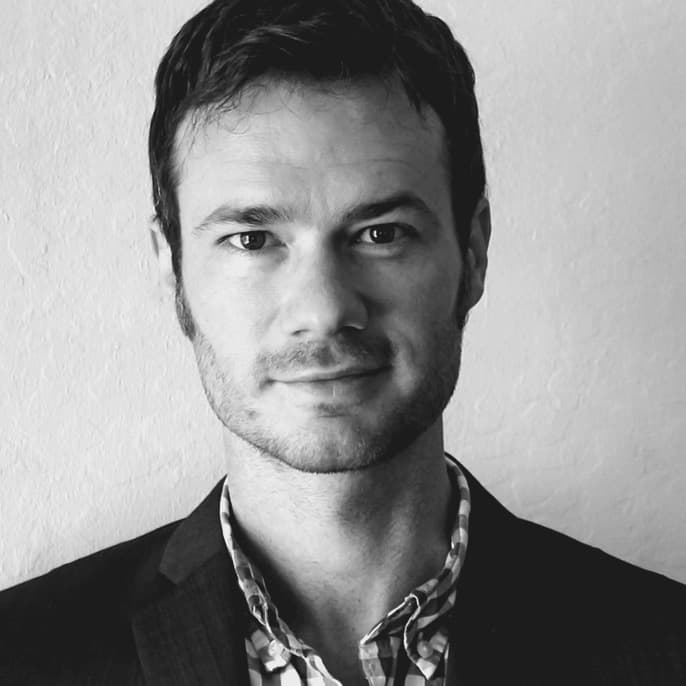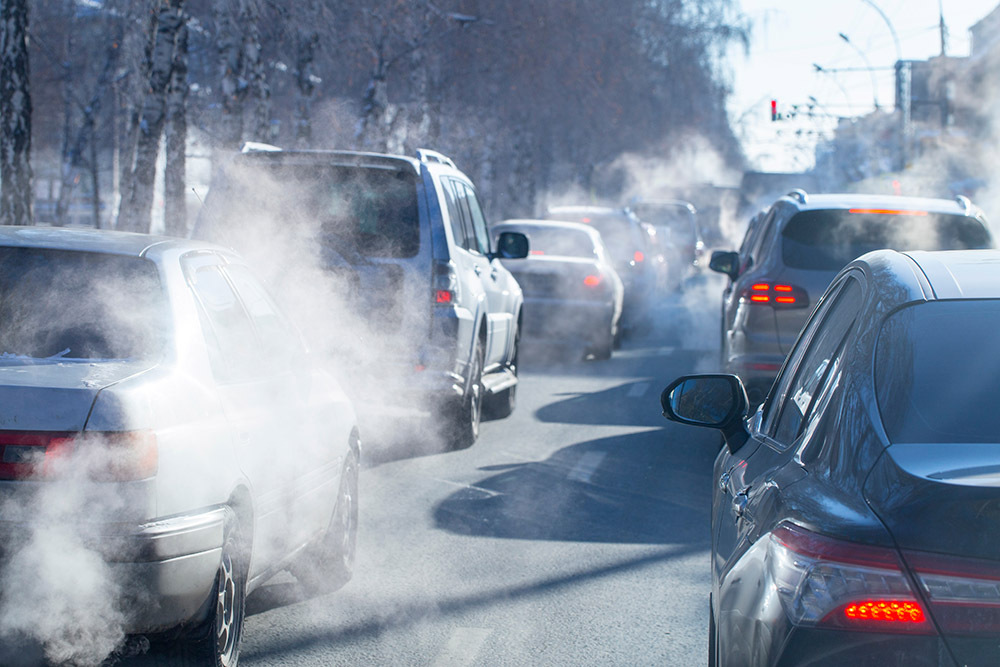Takeaways:
- Regardless of income, areas with a larger share of non-white people experience more air pollution than whiter but otherwise similar areas.
- Decades of racist planning decisions have contributed to inequities in vehicle pollution exposure.
- Various options exist for lessening air pollution and its impact.
Los Angelenos who drive less are exposed to more air pollution, as commuters from predominantly white neighborhoods travel through non-white areas. That’s according to new research co-authored by Geoff Boeing, assistant professor of Urban Planning and Spatial Analysis at the USC Sol Price School of Public Policy.
Those findings, recently published in Urban Studies, demonstrate how decades of racist planning decisions have contributed to a vehicle pollution paradox.
Twentieth-century planners bulldozed urban areas to build freeways for suburban residents to drive to job centers. Although whiter and wealthier areas like Beverly Hills successfully blocked such projects, similar opposition efforts failed in less-white and less-wealthy parts of L.A., such as Boyle Heights, which was carved up by five freeways and two enormous interchanges.
Those decisions reverberate today, allowing Los Angeles residents who travel the most to be exposed to less air pollution, Boeing and his colleagues found. They modeled local exposure to vehicular air pollution as a function of vehicle kilometers traveled, using demographic, household travel, street network design and air pollution data.
The study concluded that:
- All else equal, census tracts whose residents drive less are exposed to more vehicular air pollution. (Census tracts are subdivisions of a county, each of which averages about 4,000 people.)
- Regardless of income, tracts with a larger share of non-white people experience more air pollution than whiter but otherwise similar tracts.
- On average, white commuters travel through tracts that are far more non-white than tracts where most white commuters live. Yet this disparity does not exist in the opposite direction, as non-white commuters, on average, don’t travel through tracts that are substantially whiter than their home tracts.

Boeing noted that previous research showed that communities of color tend to be exposed to more air pollution. However, earlier studies often focused on their proximity to pollution sources but didn’t control for how much pollution those communities were generating themselves. For this study, Boeing sought to measure emissions from mobile sources — vehicles — and control for how much pollution was generated by the communities he examined.
The results — that the more L.A. residents drive, the less they’re exposed to air pollution — were “superficially surprising,” Boeing said. “But given what we know about L.A. geography, we expect to find this kind of injustice in the city. You get these paradoxes of unfairness.”
Righting the wrongs of past urban planning decisions
The study’s authors, including USC Price School PhD candidate Clemens Pilgram and USC Price School graduate Yougeng Lu, proposed a handful of policy fixes. None of them can single-handedly undo decades of systematic urban planning, Boeing noted. Still, some possible solutions are:
- Raise fuel efficiency standards for new cars and encourage electrification. That could reduce emissions without cutting the amount of driving. However, that would not eliminate air pollution from rubber tires and brake dust.
- Enact tolls or other forms of congestion taxes to reduce driving or generate compensation for its negative side effects.
- Discourage commuting altogether by incentivizing more people to work from home, perhaps through tax credits.
- Address environmental injustice through the housing market. Policymakers could permit more residential construction in job-rich neighborhoods, thereby reducing commute distances. They could also legalize construction of denser and more affordable housing in less-polluted, exclusive neighborhoods to reduce exposure disparities.
The research findings are similar to other stories of environmental injustice, Boeing said. “The story is, basically, that people with more privilege and more wealth are usually able to export their pollution into other communities.”
